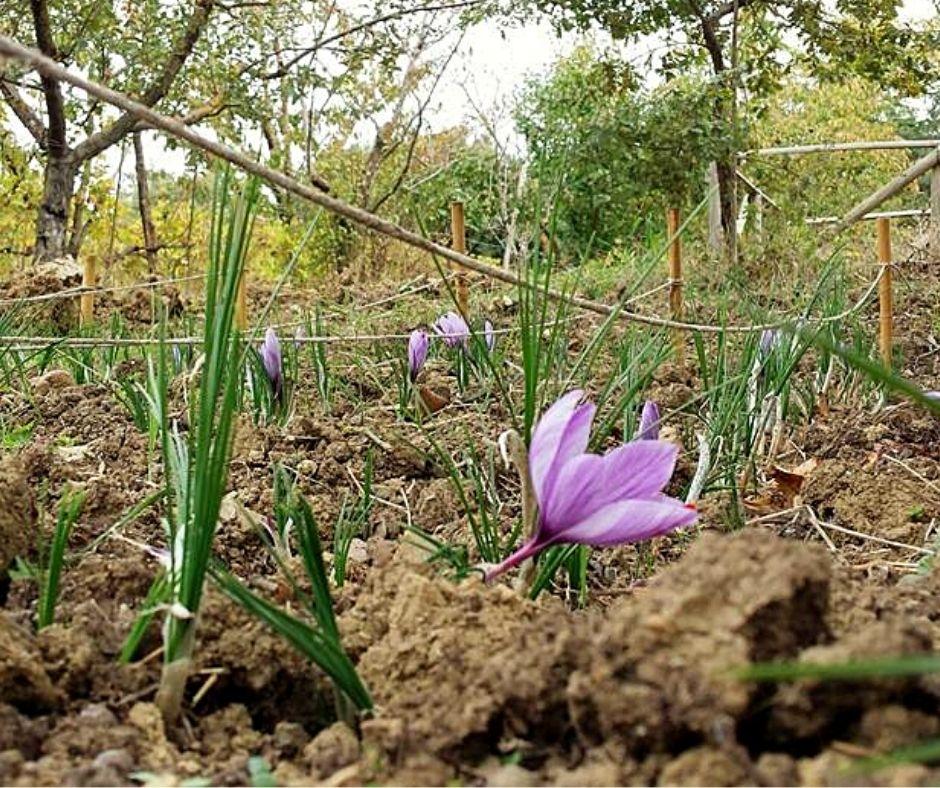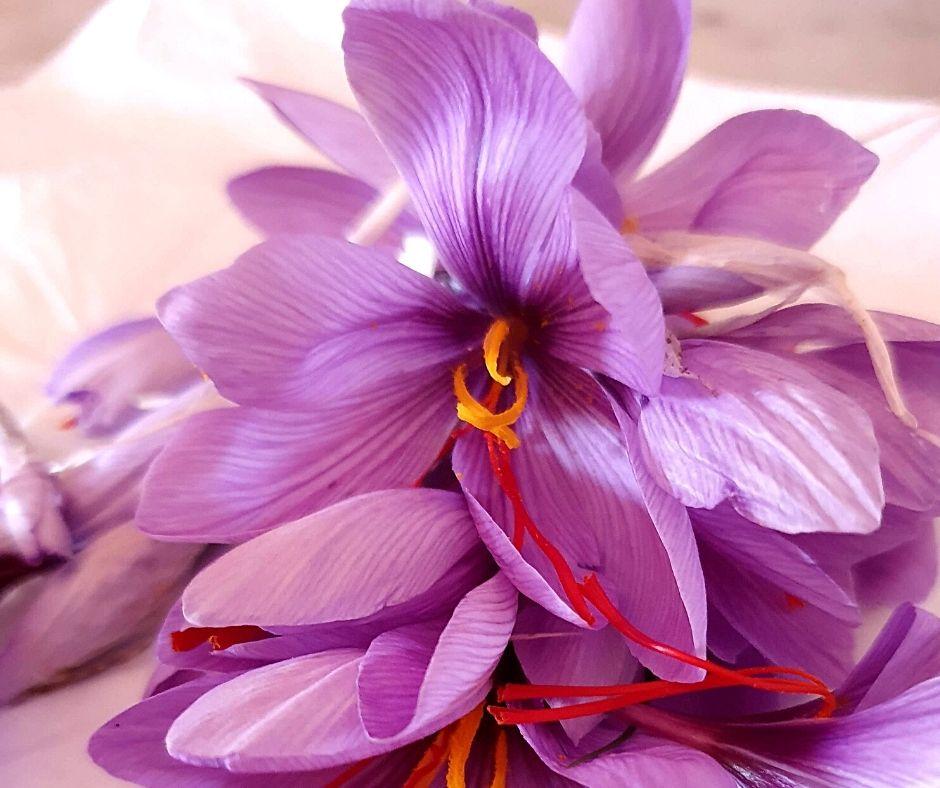So fragile but still making its way through the hard clumps.
The saffron plant comes from a bulb (crocus sativus) and grows around 20-30 centimeters in height. The flowers have a purplish lilac color and inside there are three bright red stigmas.
The latitude of Italy is perfect for growing the bulb. it arrived to us from Turkey. Definitely loves the sun!
The bulbs are in vegetative stasis during the summer, then in September they wake up and the filiform leaves, of an intense green color, are born from the ground. Some leaves vegetate throughout the winter, while the flowers appear from others. Finally, in spring the plant multiplies the bulbs from which the plants of the following year will be born.
But do you know where the spice comes from? It comes from three stigmas inside the flower corolla!
The picking of flowers takes place in autumn, between the end of October and the beginning of November. It is a truly evocative moment, both for the beauty of the land strewn with purple flowers, and for the gratification of being able to tap into the precious harvest. Once collected, the stigmas are separated by hand from the corollas and finally dried. It is a process that requires a lot of time and care. Just think that it takes about 150 flowers to make one single gram of spice!
Saffron has a very intense aroma and can be used from appetizers to desserts. The distinctive feature of saffron is certainly the yellow color it provides. The etymology of the word comes from the Arabic Za’faran: “asfar” means “yellow”. There are three main substances that compose it and it is one of these, crocin, that affects the color by characterizing the stigmas with yellow pigments.
Much of my knowledge about saffron comes from meeting the family that manages the Santa Maria Farmhouse near Pienza. Maura and Virno produce cereals, oil, jams, chickpeas, spelt, barley and, of course, saffron! The farm is one of our stops during the tour in Tuscany: we will have the opportunity to deepen the cultivation techniques and to taste wonderful dishes prepared by Maura, the owner, with this precious spice.
Last but not least at the Santa Maria farm they use this ingredient to make… beer!





